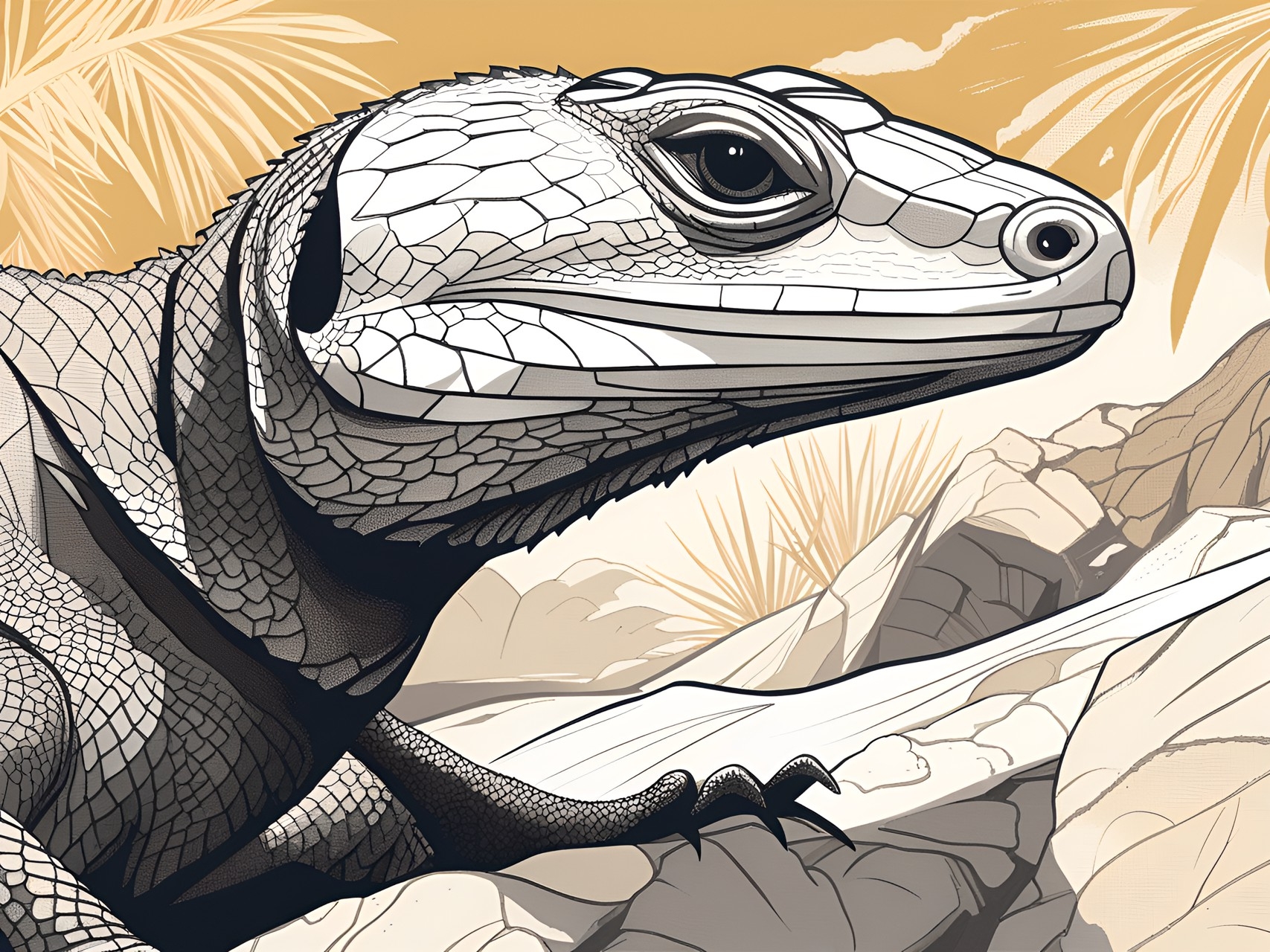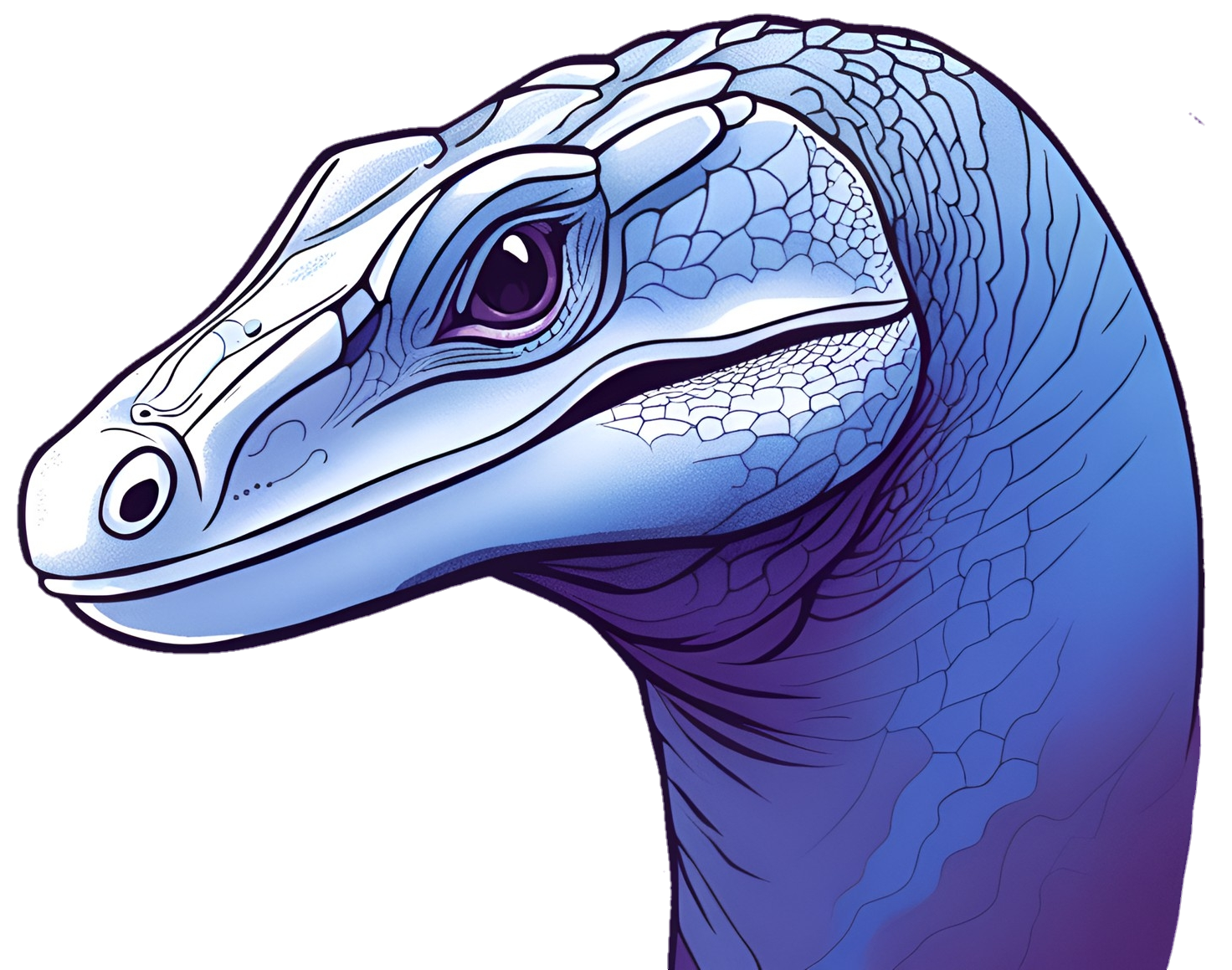Hangkok Lizard
There are three variants of this desert dwelling lizard which can be found throughout the northern deserts of Emynea. Most are native to the Frozen Wastes but might also reside in Alkelbulan, Nordreyjar or Bharat. These variants are the Gomgomok, Niktu and Vish Hangkok, each with their own unique Kaithur to match their habitat. Almost statuesque, Hangkok Lizards spend considerable time soaking in sunlight or elemental forces. While Gomgomok Hangkok bask in the most radiant stretches of the Shamsi Desert, Niktu reside in the heart of the Frozen Wastes, relying on frigid temperatures to sustain themselves. Meanwhile Vish live within the waterways of the Frozen Wastes and Bharat.
|
First AbilityVeksit's Venom Those with Veksit's Venom can afflict a potent and often lethal illness via bite or scratch, injecting it like a venom.
Second AbilityRithalids' Charge Hangkok with Rithaldis' Charge can store up radiant energy inside their bodies without limit and cannot be harmed by radiant energy. They can convert this to energy, use it to strengthen their muscles or re-release it like an Aura manifestation at will. Unlike most manifestations, they cannot produce their own radiant energy, reliant on a source. Gomgomok hangkok inherit this ability.
Iska's Charge Those with Iska's Charge can absorb and store up ice magic or extremely cold temperatures inside their bodies and are immune to damage from ice or cold. They can convert this to energy, use this to strengthen their muscles or re-release it like an Aura manifestation at will. Unlike most manifestations, they cannot produce their own cold or ice, reliant on a source. Niktu variants inherit this ability.
Iska's Movement Hangkok with Iska Movement are able to walk, step or move on or through ice freely and cannot suffocate when surrounded by their aspect. They are also immune to all ice magic and can briefly transform into their aspect, travel or merge with other ice and reform elsewhere. Vish variants usually inherit this ability.
Ithisda's Movement Hangkok with Ithisda's Movement are able to walk, step or move on or through liquid freshwater freely and cannot suffocate when surrounded by their aspect. They are also immune to water magic and can briefly transform into water, travel or merge with other water and reform elsewhere. Vish variants usually inherit this ability.
|
Anatomy |
Original Ancestor | Lifespan |
|---|---|
Varanus griseus
Desert Monitor Lizard |
8-17 years |
Length | Weight |
|---|---|
3-7 ft
1-2 m |
18-100 oz
520-2850 g |
Coloration |
|---|
Hangkok are light brown, yellow or gray with horizontal bands on their backs and tails and yellow spots across their backs. Young monitors are usually bright orange. |
Gomgomok
Gray to orange with a rounded tail. In their magic form, their bands become stark white while their claws and teeth become dark purple. Alternately, they may have entirely white scales and their bands become purple instead.
|
NiktuLargest variant. In their magic form their scales become pale blue and their bands either remain dark gray or they become dark purple alongside their spines, claws and teeth.
|
VishSmallest variant, they can grow up to 3 ft long and weigh barely over a pound. Their head is broader and flatter than other variants. In their magic form their legs become deep blue while their bands, claws and teeth are dark purple.
|
Adaptions |
Thanks to their long necks, powerful tails and well developped limbs, hangkok lizards are excellent swimmers, divers and diggers and can run at 20 mph (32 kh/h) in short bursts. When bangkok lizards run, they raise their bodies up and do not touch their tails to the ground, capable of bursts of speed rather than stamina. If one is lucky, they might just see a vish hangkok dashing across the surface of the Tepid Lakes as as they chase down a dragonfly! Outside of these sprints, they usually move very slowly but they are also capable of climbing trees, rocky escarpments and bushes. Hangkok can even jump more than half a meter!
Their bite comes with a venomous punch alongside oral bacteria and Veksit's Venom. They even make use of an actual venom, a neurotoxin which paralyzes smaller prey! In humans, this venom inflicts nausea, dizzyness, whole body muscle pain, elevated heartbeat, difficulty breathing and diarhea which sets in after 20 minutes and can last 24 hours. But it isn't the venom which usually kills, its the diseases their bites impart. Each specimen carries a different disease and these are incredibly difficult to treat, most succumbing to their illness or at least becoming incapacitated for some time. There is even protease and digestive enzymes in their venom which helps in breaking down their food. Thanks to their potent bite, many human settlements revile these lizards and kill them when possible. |
Habitat |
Inhabiting biomes such as desert ergs and regs, arid scrublands, temparate or tropical forests and grassy steppes, hangkok lizards have adapted to two of the most unforgiving habitats of Emynea: the Shamsi Desert and Frozen Wastes! Niktu in particular prefer sandy or clay deserts along the coasts of the Keyh Sea in Nordreyjar and Parsa, residing in salt marshes and craggy regs. Meanwhile Gomgomok are interspersed throughout the Shamsi Desert and Vish are spread throughout the frigid reaches of the Frozen Wastes and Bharat. In general, hankok dislike habitats with dense vegetation but might still linger amid light woodlands.
In their youth, hangkok are more likely to make their home along the edges of farmland, gardens or even within urban centers! In these places they are less available to many predators wary of humankind. They hunt down insects in quiet alleyways and bask atop rooves, skittering between the shadows and tight spaces abundant in settlements. Some adults might brave the edges of human settlements and agricultural fields while seeking rodential prey but will do all they can to avoid humans who usually kill them on sight. Its much easier for their children to stay hidden, driven out as they grow to0 large to conceal themselves. Adult hangkok lizards gladly settle into abandoned buildings and familiar ruins, living between the cracks of buildings. But they are most found wherever their favorite prey lives in large numbers. |
Diet |
These are opportunistic carnivores with a wide ranging diet but overal, they will eat anything they can sink their teeth into! Each variant has their preferences but for the most part, hangkok feed primarily on rodents, eggs and other reptiles. Birds, amphibians, insects, invertebrates and small mammals also fill out their diet. Somewhat of a scavenger and having a keen smell for rotting flesh, hangkok will feed on any carrion or eggs they come across! NiktuThe diet of a nicktu is similar to most other hangkok lizards but they have a strong preference for turtles or tortoises, their hatchlings and eggs, venomous snakes and even juvenile hangkok lizards. Endlessly bold, Nicktu frequently dig up eggs or invade burrows in order to eat the occupants! They aren't even deterred by venomous prey, swallowing vipers whole as they are resistant to hematoxic and neurotoxic venoms. They won't even react to doses high enough to kill 4,000 humans!
VishVish hangkok are much smaller than the other variants, feeding mainly in fish, insects (especially beetles), eggs and smaller lizards. Gobbling up eggs and young of any species, fish, insect or reptile, they forage underwater, under debris, amid dense scrub or in lake sediment. They will readily ambush insects which hover over the water if not chasing them down, dashing atop ice or tepid waters with Ithisda's Movement!
|
Life Cycle |
Gomgomok
Gomgomok Hangkok breed from May to July, laying their eggs between June and July. About 20 eggs are lain and incubate for 120 days. Hatchlings are born at a length of 9.8 in (25 cm), relatively mature and independant. They don't reach full size or maturity until they've hibernated three to four times.
Niktu
Niktu breed from April to May and lay up to 34 eggs within a burrow which is 2-4 ft (70-114 cm) deep. Females will spend nearly a week trying to dig the perfect hole and will guard her burrow for several weeks after laying her eggs. Eggs hatch from September to October but hatchlings stick together in the nest, not active until spring. These hatchlings are totally independant and become sexually mature after three to four years.
VishMating occurs in July or August during monsoon season. Vish lizards may quarrel over mates, standing on two legs to fight! 2-15 eggs are lain in September and October, incubating for up to ten months!
|
Behavior |
These are a solitary species which maintains large territories, spending the majority of the day either underground or basking atop rocky escarpments. Gomgomok and Niktu slowly absorb and build up sunlight or frigid temperatures, using the energy they absorb to hunt. When they feel threatened and cannot run, hangkok lizards puff up their body, hiss loudly with their mouth agape and their tongue stuck out. They won't hesitate to bite and can whip their tails around with force, doing whatever it takes not to be taken. Not only are their bites painful but they will cling to an aggressor with sharp teeth and their bite carries unpleasant venom and potent diseases!
Hangkok focus most of their activity into the early morning and late evening, hunting as a crepuscular predator. During the most extreme conditions of their unforgiving habitats, these lizards remain in their burrows underground. They are strong diggers but might steal the dens of other species in difficult soil. These burrows can range from 4-16 ft (125-500 cm) long and 1-4 ft (30-120 cm) deep. Gomgomok in partuclar dig complex tunnels with many openings. In the coldest months, hangkok not adpated to frigid habitats hibernate in October. Yet even Vish variants become inactive between December and March, no longer feeding but still often basking. These hardy lizards have a big attitude, defying attempts to tame them and appearing hateful toward humanity. They are generally disliked across their home range, many locals killing them when encountered. Most locals believe they carry and in fact aim to infect human settlements with diseases and disaster, unaware that it is only their bite which is infectious or that they are beneficial to aggricultural settings. They tend to eat a great number of pests to crops and livestock. While they can seem vicious, hissing and puffing up with vigor, they are more likely to turn and flee and are only dangerous when backed into a corner. However, they are difficult to keep in captivity and stubbornly defiant. |
Domestication |
Hangkok lizards do not respond well to captivity, rarely living for more than a few years. Few are familiar with their needs as they aren't well understood or frequently encountered. However, when properly kept and tended to, they have been known to survive up to 17-25 years! One must imitate their biome as much as possible including the cycle of seasons they experience in the wild such as colder temperatures and reduced lighting in winter. Regardless of how well they are kept, they do not tolerate frequent handling and never become docile. In fact, wild specimens are more likely to become amenable than those being kept. Unfortunately, these are an unpopular species with all manner of ill repute tied to them. One such superstition is that if one of these lizards runs between a man's legs, it can render him impotent. Despite this, those of Ilnid's court enjoy trying to tame these purely because of the difficulty and they are popular as familiars or beast companions outside of their natural range, found in black markets. |












Comments